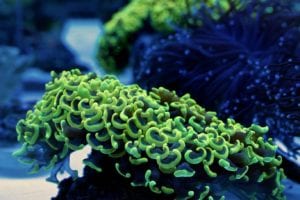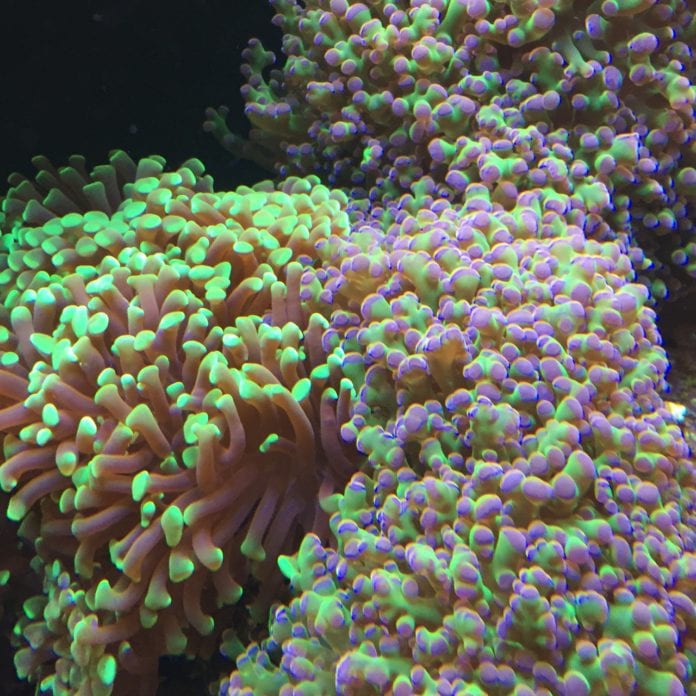Grouping Like-Kind Corals (Frogspawn, Torch, and Hammerhead Coral)
It is important to carefully select the placement of corals when introducing them to your aquarium. Frogspawn, torch, and hammerhead corals are among the most popular large polyp stony (LPS) corals for reef keepers. It is easy to see how they make a beautiful addition to any saltwater tank with the vast array of colors they come in. However, these corals are considered aggressive by nature and must be given adequate room to grow so that they do not sting other nearby corals. Surprisingly though, these corals typically do well together because they are all species of the Euphyllia family.
Requirements for torch, frogspawn, and hammerhead coral
- Euphyllia corals: Frogspawn coral, torch coral, bubble coral, hammerhead coral
- Skill Level: Moderate
- Temperament: Aggressive
- Light Level: Moderate
- Water Flow: Moderate
- Water Temperature: 72-78° F

Being aware of the requirements and temperaments of the different corals in the tank helps with proper placement and safety of nearby corals. While the Euphyllia corals typically do well together, it does vary between each specimen, so knowing what to look for will help correct the problem should one arise.
Related Content: Coral Care
















